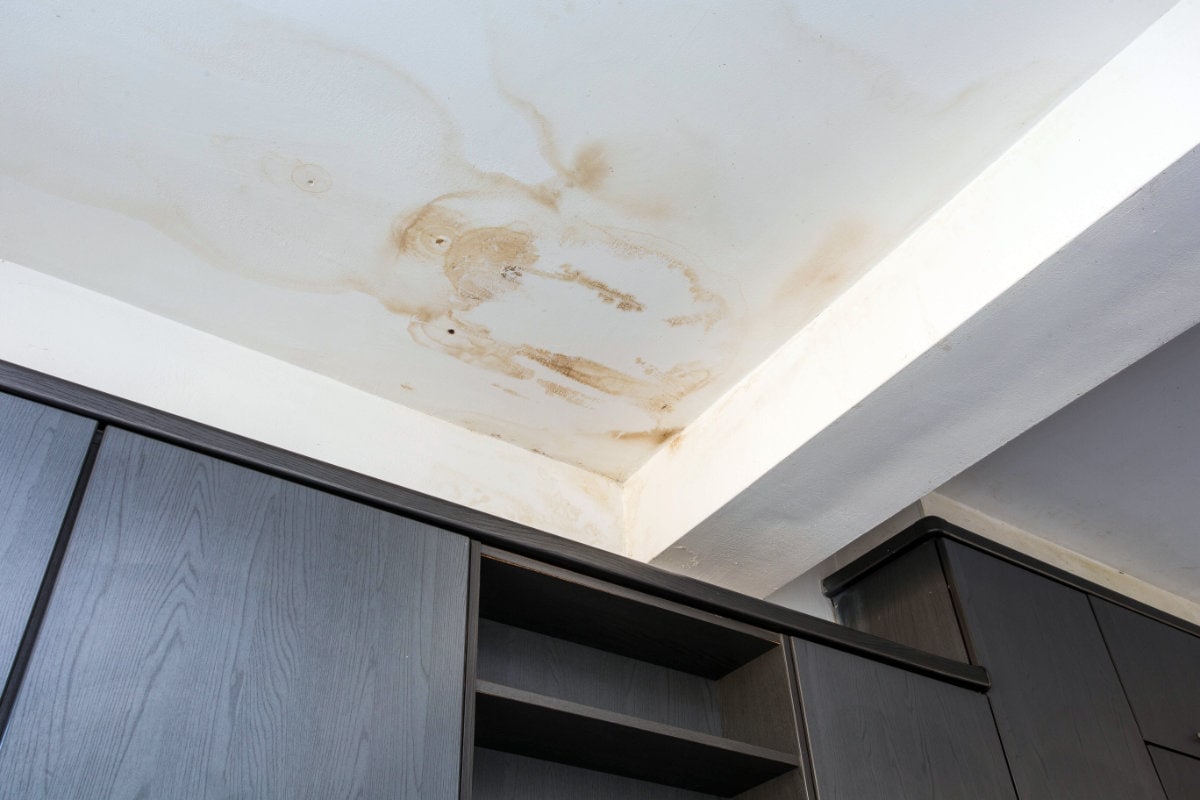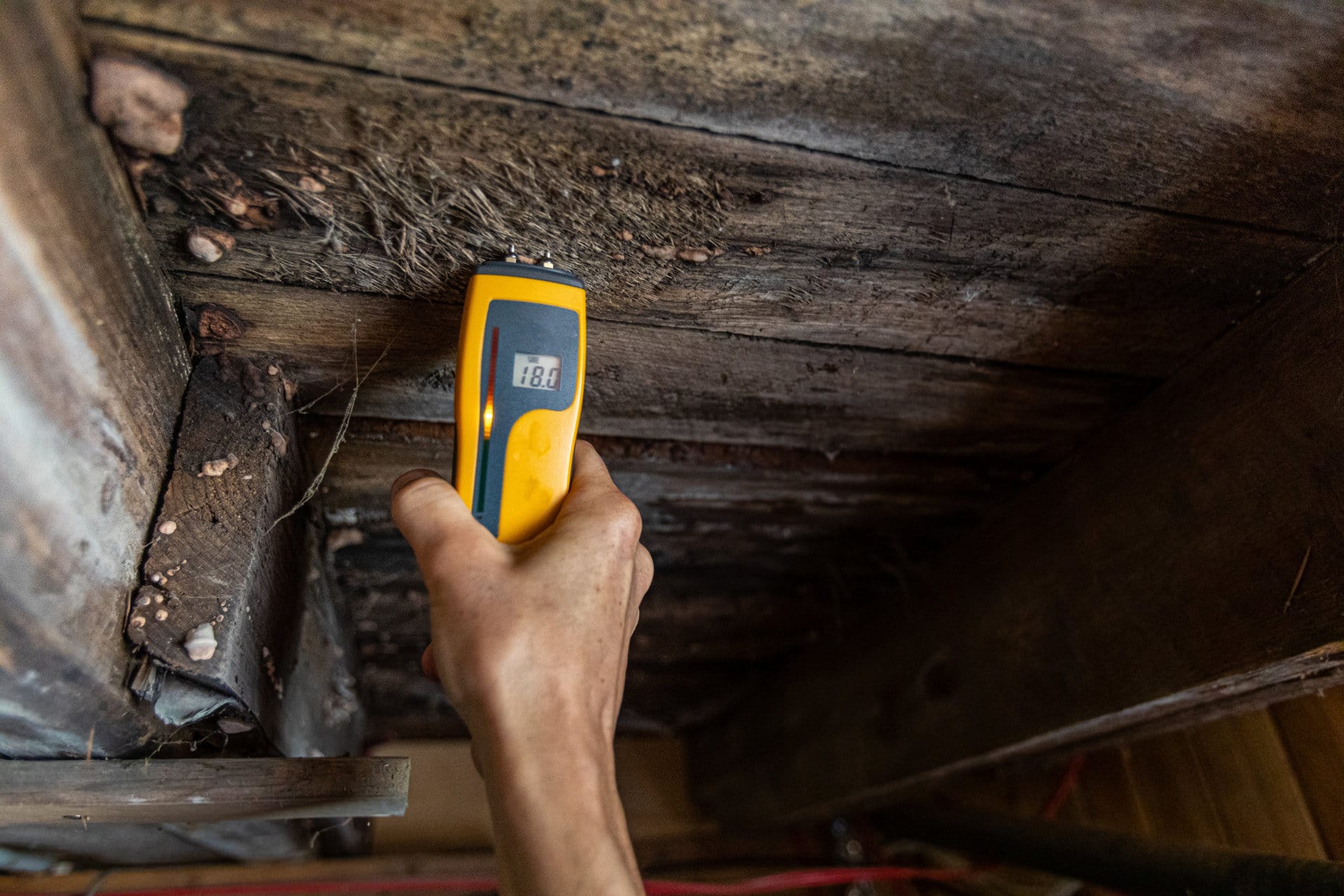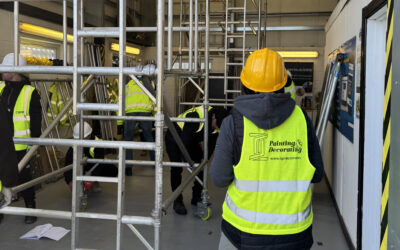At Ignas Ltd., we’ve always believed that doing things the right way means doing them safely. That’s why we’re genuinely proud to share that we’ve once again earned the SafeContractor certification for 2025.
During the years we have been providing our services of painters and decorators in London, we have often met with enquiries that concerned dampness, and the growth of fungus and mould on the ceiling caused by it. Based on our expertise and knowledge in this subject, we’ve decided to write this article to help you learn more and deal with this problem.
What causes damp?
There are two main sources of dampness in the house. The first source is the outside water – it gets inside the house through a leaky roof, with the rain and snow. In this case, the roofer is to blame and he should be called to fix the roof from the outside to prevent the water from getting inside the house.
The other source of dampness is the water that’s already inside the house. Again, this further breaks into two categories – it can either be a faulty roof or lack of proper ventilation – or worst case, both at the same time.
When the water has no way of getting out of your house, we’re talking about bad ventilation or lack of air circulation. This means that perspiration and humidity – from drying clothes, shower, bath, steam cooking, etc. – has no way of leaving your house and stays on the walls and ceilings. This can cause the development of mould and humidity.
Finally, when we combine the above problems with bad ventilation with a faulty roof, we have real problems at our hands. In this case, the perspiration and moisture may lead to water streaks inside the roof.
How to deal with dampness if it comes from a faulty roof
If the roof is poorly designed or constructed, the water streaks may be the result of water condensation. This process may from a couple of months to several years. This depends on the scale of errors, construction pace and weather.
These days, it is common for newly built houses to have utility attics. While these certainly come in handy for storage purposes, they also limit the possibilities of free, natural airflow in the structure and roof thermal insulation.
This is a possible source of condensation – and there is one very annoying catch to it. It often goes unnoticed for a long time. Condensation is hidden within the roof, and you won’t notice it after it is visible to the naked eye – when the situation is already pretty severe.
Why water condensation can go unnoticed for so long?
This is due to the absorption of moisture by mineral wool and wood, which cannot be seen from the attic side. Unfortunately, the moisture not only deteriorates the thermal insulation of the roof but can also lead to mould on the truss and plasterboards.
The only method of minimizing the amount of condensate that forms and accumulates in the roof structure is to ventilate the roofs. This involves the construction of special surfaces inside the roof to increase the ventilation and to allow the air to flow more freely. As painters and decorators, we’ve been often tasked with the work which involved helping with matters like this, and while this is not generally the job of decorators to handle such situations, we also undertake such projects.
When it comes to the attics, the most common sources of moisture include:
- They lack proper dehumidifying ventilation or it is faulty
- The vapour barrier is not proof, which leads to the steam to penetrate thermal insulation and create air drafts
- There may be thermal bridges in the roof
Damp in numbers
To be able to offer painters and decorators services in London at the highest level, specific knowledge in many areas related to the construction of houses and apartments is necessary. Below you will find a detailed explanation of the humidity limits in the apartment and the necessary ventilation so that there is no problem with stains or mould.
The state of the maximum vapour content in the air is called 100% relative air humidity or the state of saturation with water vapour. The absolute amount of steam (given in units of weight) contained in the air depends on the air temperature and it is greater when its temperature is higher.
The condensation process takes place when the air with a defined and constant water vapour content (in g / m3) is quickly cooled. The constant portion of steam (in g / m3) during cooling will constitute an increasing percentage of the maximum amount of steam that can fit in the air until it has descended to a temperature where this portion will constitute 100% of the air volume.
With further cooling, after exceeding this temperature (called the dew point temperature), water vapour will condense in an amount depending on the temperature drop. When the temperature drops below the dew point, the water vapour that is not in the air will drop out of the air as condensate (in nature as fog, rain, snow or frost).
It should be noted that the amount of condensate that forms when one cubic metre of air cools is small (9.4 g per 1m3 in 10 Celsius). So where does the condensate come from so much that it can cause large stains? Many litres of water is needed for this.
That’s why the problem of dampness is so tricky and evasive – we don’t even notice the amounts of air constantly flowing through the rooms we occupy, including attics. Ventilation (ventilation ducts) of the rooms is designed in such a way that the whole air in residential buildings is changed a dozen times a day (usually 0.5-1 exchanges per hour).
By the numbers, through your typical single-family house, there is a flow of 5-10 thousand of cubic metres per day. That’s pretty huge – now you can see how much water can condensate based on these numbers. That’s the source of your water streaks. While some of the moisture is discharged through ventilation ducts to the atmosphere, a large portion remains and reaches the roof.
Technological moisture can also be a problem
A lot of technological moisture (from the construction period) accumulates in the roofs of new buildings. It stays in them for a long time, because the drying process takes place only under certain conditions. For this reason, during the first 3-4 years, there is a lot of moisture in the roof from the drying out walls. This can result in large water streaks and stains if the water vapour from the air adds to it.
As you can see, while excessive condensation may be invisible at first, it poses a very serious problem. In reality, there have been incidents in the past when the condensation flooded entire attics overnight. This may happen when the temperature suddenly drops, or when the condensate which accumulated in thermal insulation over a long time suddenly was heated through a temperature spike.
It is worth noting that many building materials are constantly permeated with water vapour. It is not dangerous for them, as long as it does not condense in them. The danger depends on the scale of the condensation process and the type of material.
What can be done to secure the roof from accumulating moisture
The risk in the roofs is high because for a large part of the year they separate centres with a very large temperature difference. Practically, the formation of condensation in roofs is inevitable, but therefore it is necessary to build them so that the amount of condensation is small and the place of its formation is safe for the roof.
That is why various roofing and sealing materials are used in modern roofs. In sloping roofs, these are highly vapour-permeable membranes and vapour barriers. When used correctly, more water vapour will come out of the thermal insulation and roof structure than it will condense in the process of constantly passing through the roof.
How can you tell if the problem is due to condensation or a roof leak? Sometimes it is difficult to answer this question. Especially when the two causes overlap.
However, in most cases, condensation in significant amounts is formed in periods when the air temperature is low. So, if water stains appear in the attic when it is not raining or in frost, it is known that it was not caused by leaks, but by condensation.
It is always worth entrusting experts who deal with roofing techniques daily to determine what causes water stains. In many cases, this requires knowledge of the roof structure, the physics of the processes taking place in it and the techniques of laying the roofs. That’s what we do for our clients as decorators in London – we come and analyse the state of the roof, walls and ceilings, determine the cause and advise the best course of action to eliminate the problem. When possible, we help improve the ventilation ourselves.
If you need experienced decorators to take a look at your walls or ceilings, because you have problems with mould or dampness, do not hesitate to contact us!

Follow us
Blog
The Benefits of Professional Office Painting for London Businesses
A well-painted office can do wonders for a business in London. Here are the key benefits of professional office painting for London businesses, whether in the heart of the city or other areas.
How to Spot When Your London Home Needs a Repaint
Repainting isn’t just about appearances. It plays a critical role in preserving your property. But how do you know when it’s time to refresh your walls? Here’s what to look for.






